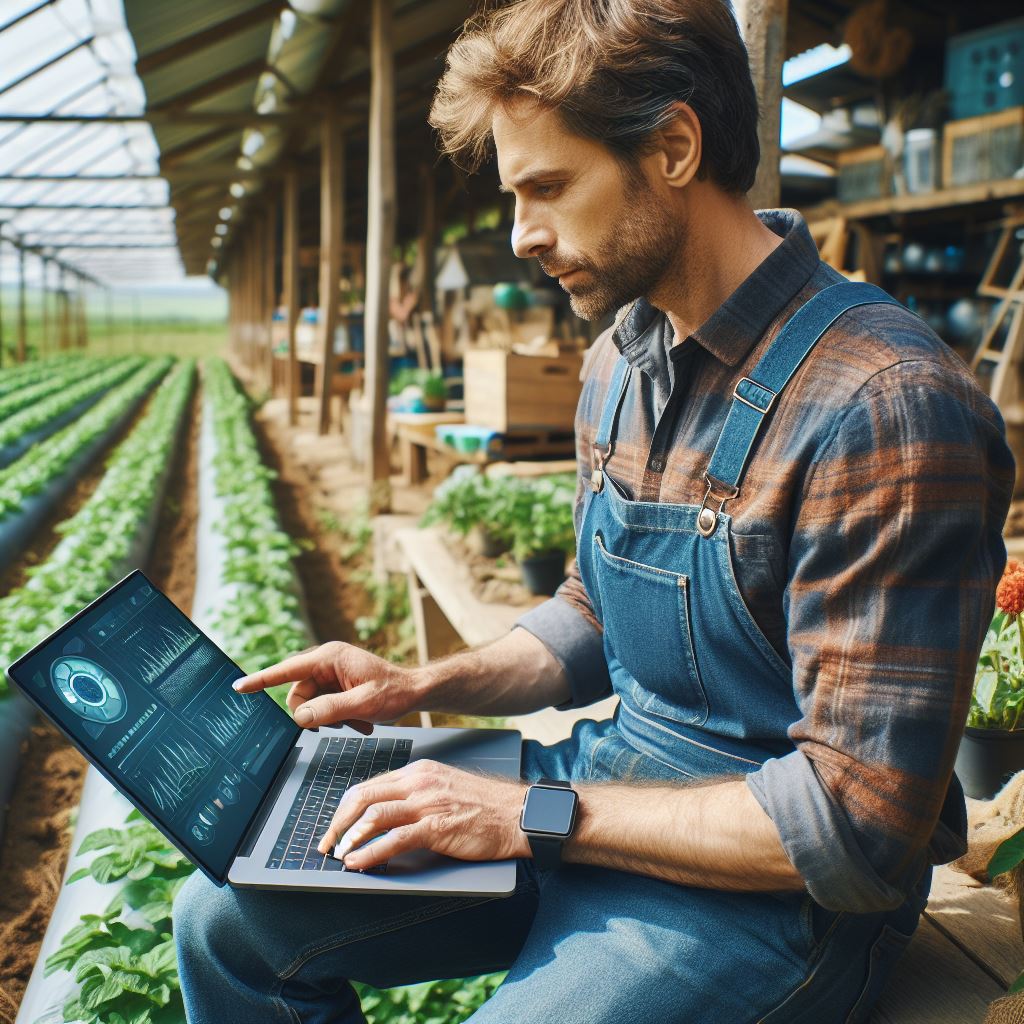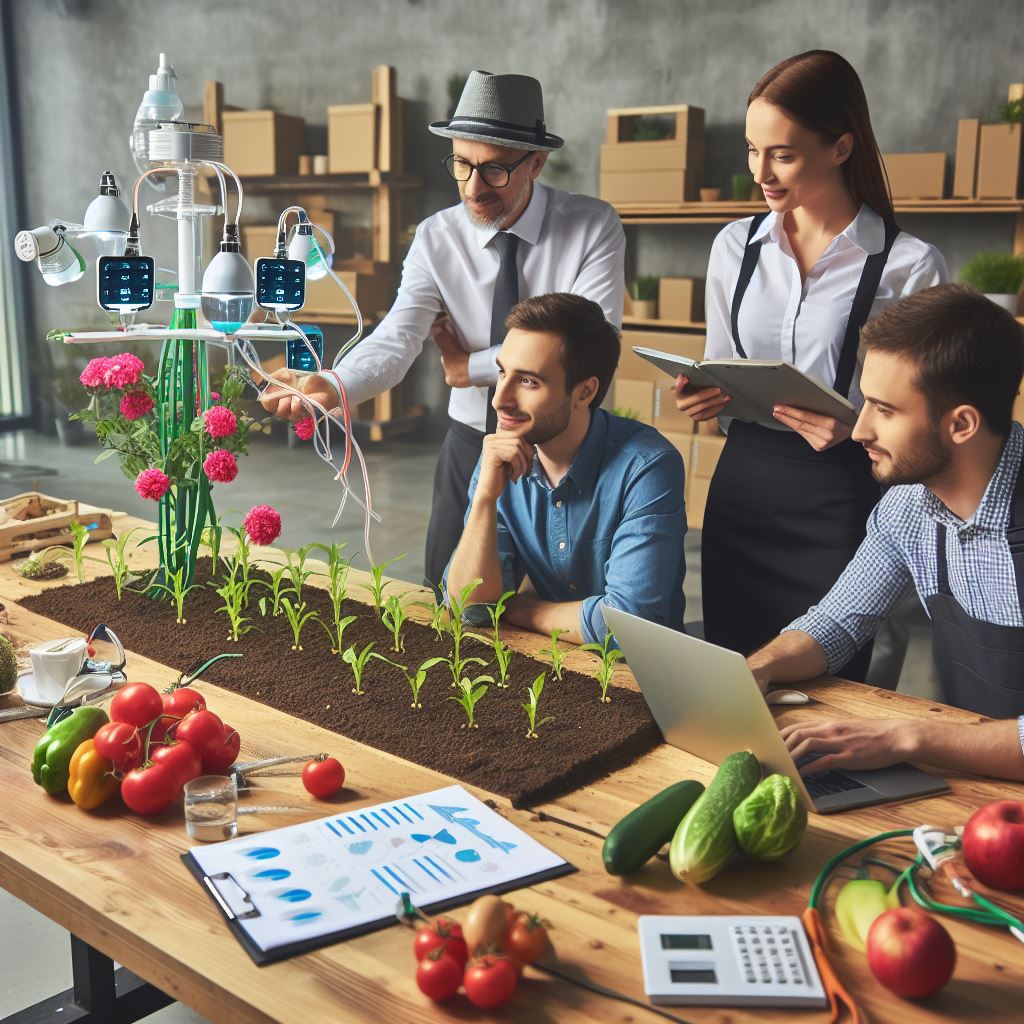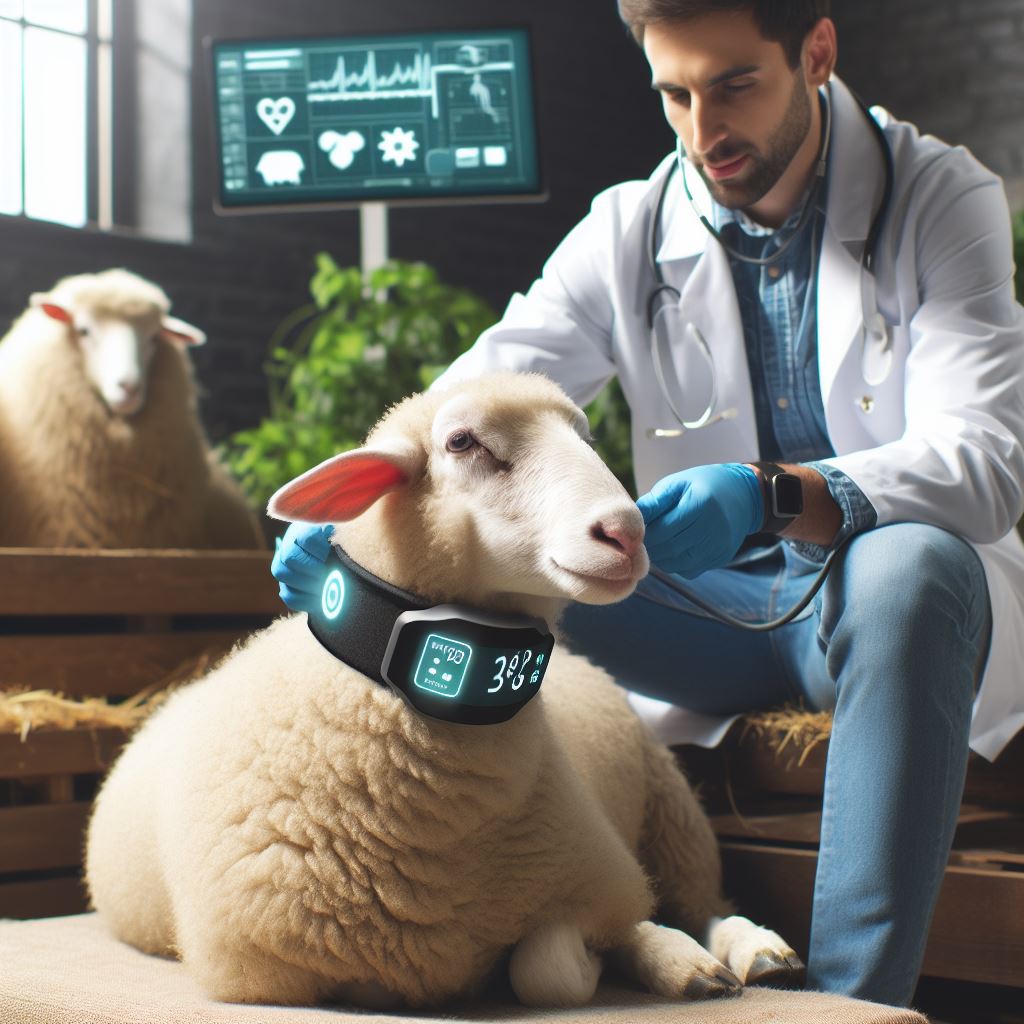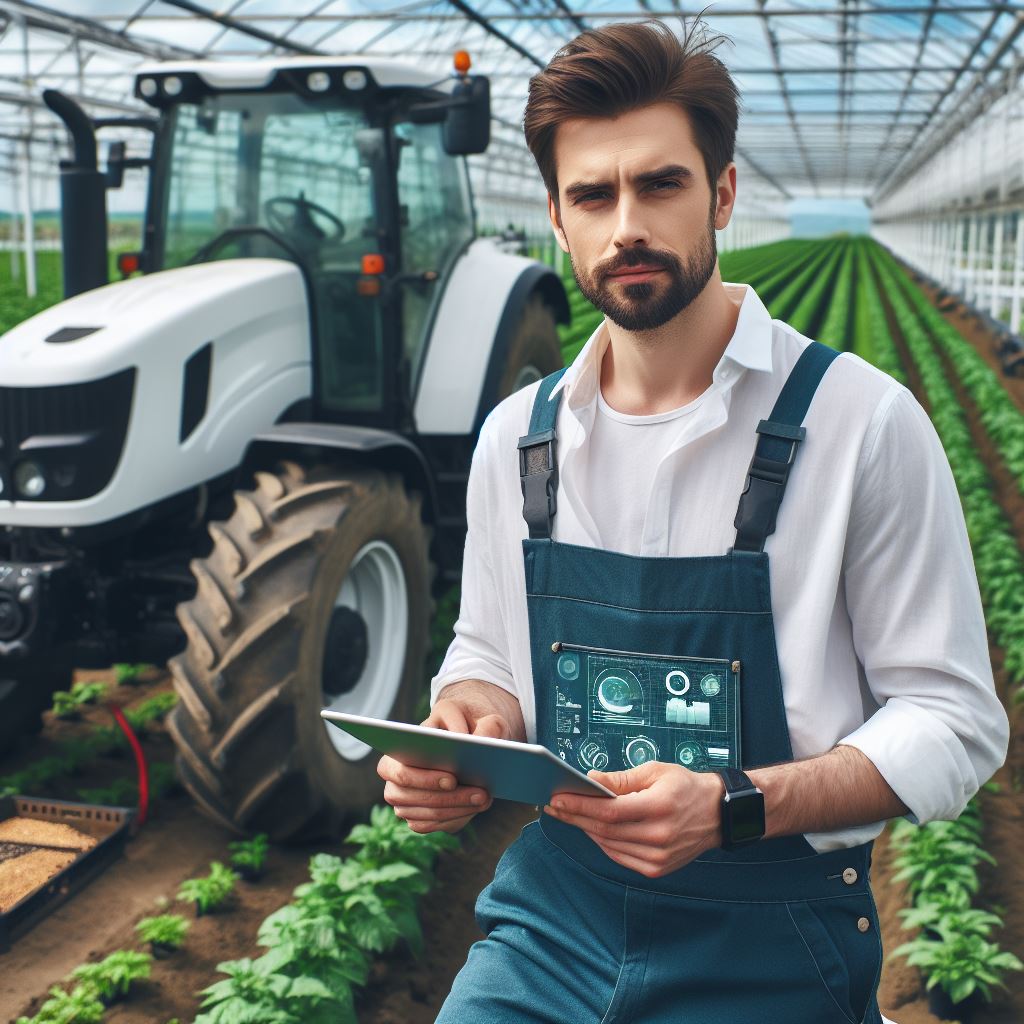Introduction
Controlled agriculture, also known as greenhouse technology, plays a crucial role in the current scenario.
It is characterized by the active monitoring and regulation of environmental conditions within a controlled space.
This blog post aims to provide a brief explanation of greenhouse technology and highlight its importance in modern agriculture.
Brief Explanation of Greenhouse Technology
Greenhouse technology involves creating an artificially controlled environment for the growth of plants.
It utilizes structures made of glass or plastic to trap heat and control temperature, humidity, and light levels.
This allows farmers to cultivate crops throughout the year, regardless of external weather conditions.
Importance of Controlled Agriculture in the Current Scenario
In today’s world, controlled agriculture has become increasingly important due to various factors.
Firstly, it allows farmers to overcome geographical limitations and produce crops in regions with unfavorable climates.
This helps to ensure a steady supply of fresh produce regardless of seasonal changes or extreme weather events.
Secondly, controlled agriculture minimizes the use of pesticides and fertilizers, making it a more sustainable and environmentally friendly approach to farming.
The controlled environment helps prevent pest infestations and diseases, reducing the need for chemical interventions.
Furthermore, greenhouse technology enables efficient water usage through advanced irrigation systems.
This conserves water, a valuable resource, and promotes responsible farming practices.
Additionally, it allows for efficient space utilization, making it ideal for urban areas where land is limited.
Basically, controlled agriculture, or greenhouse technology, is a crucial aspect of modern farming.
Transform Your Agribusiness
Unlock your farm's potential with expert advice tailored to your needs. Get actionable steps that drive real results.
Get StartedIt provides a controlled environment for year-round crop production, overcomes geographical limitations, reduces chemical usage, conserves water, and optimizes space utilization.
Embracing this technology is vital for sustainable and efficient agriculture in the future.
Definition and Overview of Greenhouse Technology
Greenhouse technology refers to the use of structures and advanced techniques to control the growing conditions of plants in a controlled environment.
What greenhouse technology is
- Greenhouse technology involves the construction of structures that enable monitoring and manipulation of environmental factors.
- These structures are typically made of glass or plastic, creating a microclimate suitable for plant growth.
- It allows farmers to extend the growing season and cultivate crops that are not native to the region.
How it operates
- Greenhouse technology utilizes various equipment and systems to regulate temperature, humidity, light, and irrigation.
- Ventilation systems control air circulation, preventing the buildup of pests and diseases.
- Using sensors and automated controls, the environment can be optimized for specific crops.
- Heating systems are employed during colder months, while cooling mechanisms are activated during hot periods.
Benefits of Greenhouse technology in controlled Agriculture
- Increased crop yields: Greenhouses provide ideal growing conditions, leading to higher productivity and efficiency.
- Year-round cultivation: By controlling the environment, crops can be grown even in unfavorable weather conditions.
- Protection against environmental factors: Greenhouses shield plants from extreme temperatures, heavy rain, and strong winds.
- Pest and disease management: The controlled environment minimizes the risk of infestations, reducing the need for pesticides.
- Water conservation: Advanced irrigation systems enable optimal water usage, reducing waste and conserving this precious resource.
- Enhanced crop quality: Greenhouse-grown plants have improved color, taste, and texture due to controlled growth conditions.
- Reduced dependency on external factors: Since greenhouse technology provides a self-sustainable environment, farmers have more control over their production.
- Year-round income generation: Continuous production allows farmers to supply fresh produce during off-seasons, leading to stable profits.
Greenhouse technology has revolutionized controlled agriculture by providing a strategic solution for overcoming limitations imposed by natural conditions.
By harnessing advanced techniques, farmers can optimize plant growth, enhance productivity, and ensure a sustainable food supply.
Read: LED Tech in Greenhouse Cultivation
Advancements in Greenhouse Technology
In recent years, the field of greenhouse technology has witnessed significant advancements.
These innovations have revolutionized controlled agriculture and paved the way for more efficient and sustainable farming practices.
In this section, we will explore some of the remarkable developments in greenhouse technology.
Overview of Recent Technological Advancements
- Emergence of energy-efficient designs that optimize natural resources and reduce carbon footprint.
- Development of advanced climate control systems to regulate temperature, humidity, and lighting.
- Introduction of hydroponics and vertical farming techniques for maximizing space utilization and increasing crop yield.
- Utilization of renewable energy sources like solar power to minimize reliance on conventional electricity grids.
- Integration of modern irrigation systems that enable precise water management and reduce water wastage.
- Use of specialized ventilation systems for improved air circulation and prevention of disease outbreaks.
These advancements have collectively improved the efficiency, productivity, and sustainability of greenhouse farming.
They enable farmers to have greater control over environmental conditions and ensure optimal growth of crops throughout the year.
Introduction of Automation and Remote Control Systems
One of the most significant developments in greenhouse technology is the introduction of automation and remote control systems.
These innovative solutions offer numerous benefits to farmers:
- Ability to monitor and control greenhouse operations from any location, enhancing convenience and efficiency.
- Automation of tasks such as irrigation, lighting, and nutrient delivery, reducing labor requirements and costs.
- Integration of sensors and artificial intelligence (AI) algorithms for real-time data analysis and automated decision-making.
- Optimization of resource utilization by adjusting environmental parameters based on crop requirements.
- Prediction and early detection of plant diseases, pests, and nutrient deficiencies through advanced monitoring systems.
Automation and remote control systems have revolutionized greenhouse farming by streamlining operations, reducing human error, and maximizing crop yields.
Farmers can now focus on strategic decision-making and maximize their profitability.
Integration of IoT and AI in Greenhouse Systems
The integration of the Internet of Things (IoT) and artificial intelligence (AI) has further propelled the advancement of greenhouse technology:
- Smart sensors and IoT devices enable real-time collection of environmental data, such as temperature, humidity, and CO2 levels.
- AI-powered algorithms analyze the collected data to develop insights and make informed decisions for optimized crop growth.
- Predictive analytics algorithms forecast climate patterns, helping farmers anticipate weather changes and adjust cultivation strategies accordingly.
- Remote monitoring and control platforms allow farmers to receive alerts and notifications, ensuring proactive management.
- AI-powered robots and drones perform tasks like planting, harvesting, and crop monitoring with precision and efficiency.
The integration of IoT and AI empowers farmers with real-time visibility, predictive capabilities, and enhanced automation.
It enables proactive decision-making, reduces resource wastage, and facilitates sustainable farming practices.
Generally, advancements in greenhouse technology have transformed controlled agriculture, making it more efficient, sustainable, and productive.
Energy-efficient designs, automation and remote control systems, and integration of IoT and AI have played crucial roles in these developments.
As we move forward, it is essential to continue investing in research and innovation to unlock the full potential of greenhouse technology and ensure food security for future generations.
Read: Smart Greenhouses: Tech Explained
Benefits of Greenhouse Technology in Controlled Agriculture
A greenhouse is a controlled environment that offers several advantages for modern agriculture.
In this section, we will discuss the various benefits of greenhouse technology.
Showcase Your Farming Business
Publish your professional farming services profile on our blog for a one-time fee of $200 and reach a dedicated audience of farmers and agribusiness owners.
Publish Your ProfileExtended growing seasons
- Greenhouses provide a favorable environment for plants, allowing them to grow all year round.
- By controlling temperature, light, and humidity, farmers can extend the growing seasons beyond traditional limits.
- This means they can produce crops during off-seasons, increasing their overall productivity and income.
Protection against adverse weather conditions
- Greenhouses act as a shield, protecting plants from extreme weather events such as storms, hail, and frost.
- They provide a stable and controlled microclimate, shielding crops from temperature fluctuations and excessive rainfall.
- By minimizing the impact of adverse weather, farmers can ensure consistent crop production and reduce losses.
Improved crop quality and yield
- Greenhouse technology allows farmers to optimize growing conditions, resulting in higher crop quality and yield.
- By fine-tuning variables like temperature, humidity, and light intensity, plants can thrive and achieve their maximum potential.
- Greenhouses also enable the use of advanced cultivation techniques, such as hydroponics, leading to even better crop outcomes.
Efficient use of resources
- Greenhouses promote resource efficiency by minimizing water usage and reducing the need for chemical fertilizers.
- Through precise irrigation systems, farmers can deliver water directly to the roots, reducing waste and evaporation.
- Besides, closed greenhouse systems allow for nutrient recirculation, leading to more sustainable and economical agriculture.
Reduction in the need for pesticides and herbicides
- Greenhouses create a physical barrier that prevents pests and weeds from invading crops.
- As a result, farmers can reduce their reliance on chemical pesticides and herbicides.
- Integrated pest management techniques, such as biological control, can be effectively implemented in a greenhouse environment.
Essentially, greenhouse technology provides numerous benefits to controlled agriculture.
It extends growing seasons, protects crops from adverse weather, improves crop quality and yield, promotes resource efficiency, and reduces reliance on harmful chemicals.
Embracing greenhouse technology is a step towards sustainable and resilient farming.
Read: Greenhouse Gases: Farming’s Role and Solutions
Examples of Successful Implementation
Case study on a successful greenhouse project
One inspiring example of successful implementation of greenhouse technology is the project undertaken by XYZ Farms.
They constructed a state-of-the-art greenhouse facility with advanced climate control systems, allowing them to grow a variety of crops in a controlled environment.
The use of advanced technology in their greenhouse has resulted in a significant increase in crop yield and quality.
They have successfully grown crops throughout the year, eliminating dependency on weather conditions and seasonal variations.
This case study exemplifies the immense potential of greenhouse technology in revolutionizing conventional agriculture.
The impact on productivity and sustainability
Implementing greenhouse technology has had a profound impact on the productivity and sustainability of agricultural practices.
The controlled environment provided by greenhouses optimizes plant growth and minimizes the risk of pests and diseases.
This leads to higher yields and better quality produce, meeting the increasing demands of a growing population.
Moreover, greenhouse cultivation reduces the need for chemical pesticides and fertilizers, promoting sustainable farming methods.
By conserving water and energy through efficient systems, greenhouses contribute to the conservation of natural resources.
The improved productivity and sustainability achieved through greenhouse technology make it a promising solution for the future of agriculture.
Success stories from different regions
- In the arid regions of Middle East: XYZ Greenhouse Company has successfully implemented greenhouse technology to overcome water scarcity and extreme temperatures. They utilize advanced irrigation systems and cooling techniques, allowing for the cultivation of crops in challenging conditions.
- In urban areas: ABC Farms in New York City has set up vertical farms using greenhouse technology. This innovative approach maximizes limited space, enabling year-round urban farming and reducing the carbon footprint associated with long-distance food transportation.
- In northern regions: LMN Farms in Canada has embraced greenhouse technology to extend the growing season and overcome harsh winters. They utilize heating systems and supplementary lighting to create an optimal environment for crop cultivation.
- In developing countries: PQR Agri Solutions has introduced small-scale, low-cost greenhouse systems in rural communities. These systems have empowered local farmers to grow their own food, reducing dependency on external sources and improving food security.
These success stories demonstrate the versatility and adaptability of greenhouse technology across various regions and contexts.
They highlight the positive impact it can have on overcoming environmental challenges, enhancing productivity, and ensuring food security.
In general, the success stories of greenhouse technology implementation showcase its transformative potential in agriculture.
From achieving impressive crop yields to promoting sustainable practices, greenhouses have revolutionized controlled agriculture.
The case study, along with examples from different regions, emphasizes the importance of embracing greenhouse technology for a sustainable and productive future in agriculture.
Read: Greenhouse Growing: Tips for Better Yields
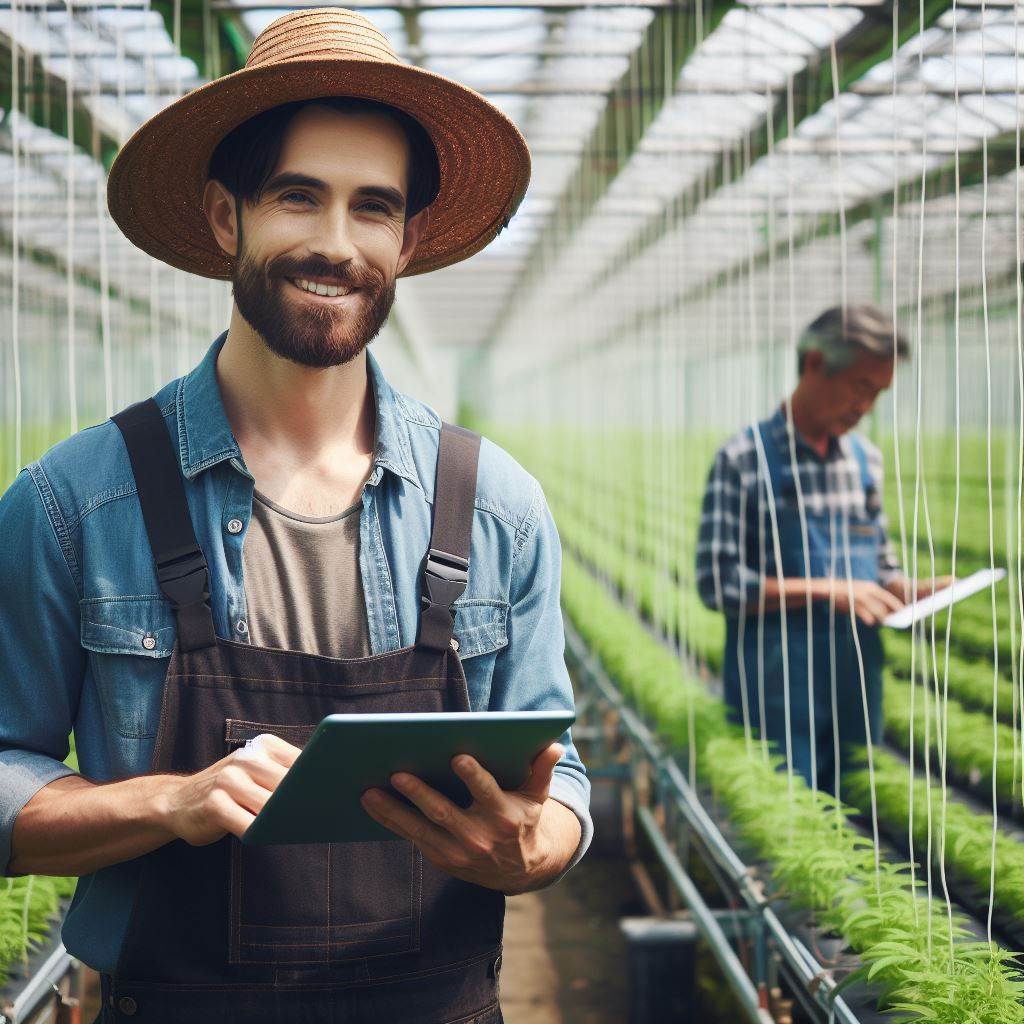
Challenges and Limitations of Greenhouse Technology
Greenhouse technology offers numerous benefits for controlled agriculture, but it also comes with several challenges and limitations that need to be addressed for its successful implementation.
These challenges include:
Cost implications and initial investment
- The initial setup cost of building a greenhouse can be quite significant.
- Investing in high-quality materials and advanced technology increases the overall cost.
- Additional expenses are incurred in maintaining optimal temperature, humidity, and lighting conditions.
- Regular maintenance and replacement of greenhouse components can add to the overall expenses.
- Small-scale farmers may find it difficult to afford the capital investment required for greenhouse technology.
The high cost of greenhouse technology poses a challenge to widespread adoption, particularly for resource-constrained farmers.
Technical knowledge and skill requirements
- Implementing greenhouse technology requires specialized knowledge and expertise.
- Farmers need to understand the principles of climate control, irrigation systems, and pest management.
- Maintaining the optimal growing environment demands continuous monitoring and adjustment of various parameters.
- Operating sophisticated equipment and computerized control systems necessitates technical proficiency.
- Training programs and educational resources should be made available to farmers to enhance their technical skills.
Lack of technical knowledge and skills can hinder the successful implementation and operation of greenhouse technology.
Environmental concerns
- Energy consumption is a significant challenge associated with greenhouse technology.
- Heating, cooling, and lighting systems in greenhouses require a considerable amount of energy.
- Increased energy usage can contribute to greenhouse gas emissions and environmental pollution.
- Efforts should be made to adopt sustainable energy sources like solar panels and energy-efficient technologies.
- Water usage is another environmental concern associated with greenhouse agriculture.
- Proper irrigation techniques and water management strategies need to be implemented to minimize water wastage.
Addressing these environmental concerns is crucial to ensure the sustainable and eco-friendly operation of greenhouse facilities.
Despite these challenges and limitations, greenhouse technology continues to evolve, and efforts are being made to overcome these obstacles.
Governments, agricultural organizations, and private companies are investing in research and development to improve the cost-effectiveness, technical accessibility, and environmental sustainability of greenhouse technology.
Additionally, collaborations between different stakeholders, such as farmers, researchers, and technology providers, can facilitate knowledge sharing and skills development.
This can empower farmers to adopt and efficiently utilize greenhouse technology.
In essence, the challenges and limitations associated with greenhouse technology should not discourage its adoption but should be seen as opportunities for innovation and improvement.
With the right strategies and support, controlled agriculture in greenhouses can play a vital role in ensuring food security, promoting sustainable farming practices, and mitigating the impact of climate change.
Future Trends in Greenhouse Technology
Increased use of renewable energy sources
As the world becomes more aware of the impact of fossil fuels on the environment, greenhouse technology is shifting towards utilizing renewable energy sources.
Solar energy, for instance, is being harnessed to power greenhouse operations, reducing reliance on traditional electricity grids.
Advancements in solar panels and batteries have made it more feasible for greenhouse owners to generate their own clean energy.
Wind power is also being explored as a viable energy source for greenhouses, especially in regions with favorable wind conditions.
By utilizing renewable energy sources, greenhouses can significantly reduce their carbon footprint and operate in a more sustainable manner.
Integration of vertical farming and hydroponics
Vertical farming, a practice that involves growing crops in vertically stacked layers, is becoming a popular trend in greenhouse technology.
This method maximizes space usage and allows for more efficient cultivation of crops in controlled environments.
Hydroponics, a soilless method of growing plants, is often integrated with vertical farming to further enhance productivity and resource efficiency.
Showcase Your Farming Business
Publish your professional farming services profile on our blog for a one-time fee of $200 and reach a dedicated audience of farmers and agribusiness owners.
Publish Your ProfileBy providing plants with the exact nutrients they need through water-based solutions, hydroponics eliminates the need for soil and reduces water usage.
Combining vertical farming and hydroponics can result in higher crop yields, reduced water consumption, and decreased pesticide usage.
Advancements in data analytics for optimized crop management
Data analytics and artificial intelligence are revolutionizing greenhouse technology by enabling precise crop management.
Sensors placed throughout the greenhouse can collect real-time data on temperature, humidity, and light levels.
With the help of machine learning algorithms, this data can be analyzed to provide valuable insights on the optimal conditions for crop growth.
Greenhouse operators can then adjust environmental parameters such as temperature and irrigation accordingly, maximizing crop yield and quality.
Furthermore, data analytics can assist in early disease detection and pest control, leading to prompt interventions and minimizing crop losses.
By harnessing the power of data analytics, greenhouse technology is paving the way for more efficient and sustainable crop production.
As the future of controlled agriculture, greenhouse technology is constantly evolving and embracing new trends.
The increased use of renewable energy sources, integration of vertical farming and hydroponics, and advancements in data analytics are shaping the future of greenhouse technology.
These trends not only contribute to more sustainable agricultural practices but also enable higher crop yields, reduced resource consumption, and improved crop management.
By continuously exploring and implementing innovative approaches, greenhouse technology has the potential to revolutionize the way we produce food in the years to come.
See Related Content: Farm Bots: Revolutionizing Animal Feed
Find Out More: Biofortified Foods: A Genetic Revolution
Conclusion
The significance of greenhouse technology in controlled agriculture cannot be overstated.
By providing a controlled environment for plant growth, greenhouses have revolutionized the way we approach farming.
Greenhouse technology offers numerous advantages, such as allowing year-round cultivation, protection from harsh weather conditions, and the ability to optimize crop yield and quality.
This ensures a consistent and reliable food supply, even in unfavorable conditions.
Furthermore, greenhouses promote water conservation by reducing evaporation and minimizing the need for excessive irrigation.
They also decrease pest and disease infestations, leading to a decrease in the usage of chemical pesticides, thus contributing to a healthier and more sustainable food production system.
As farmers, it is essential to embrace this future-growing agricultural trend. Investing in greenhouse technology can bring long-term benefits, including increased productivity and profitability.
The controlled environment allows for efficient resource utilization, reducing waste and improving overall efficiency.
Additionally, utilizing greenhouse technology enables farmers to diversify their crop production, providing a competitive edge in the market.
They can cultivate a wide range of local and exotic plants, meeting consumer demands for year-round availability of fresh, high-quality produce.
Going forward, greenhouse technology holds immense potential for a sustainable future.
It presents an opportunity to address several challenges faced by traditional agriculture, such as climate change, limited arable land, and water scarcity.
With continuous advancements in technology, the future of controlled agriculture looks promising.
By harnessing the power of greenhouses, we can ensure food security, environmental sustainability, and economic growth for generations to come.
In a nutshell, greenhouse technology is not just a trend; it is a necessity for the future of agriculture.
Embracing this technology will propel us towards a sustainable and thriving future.

